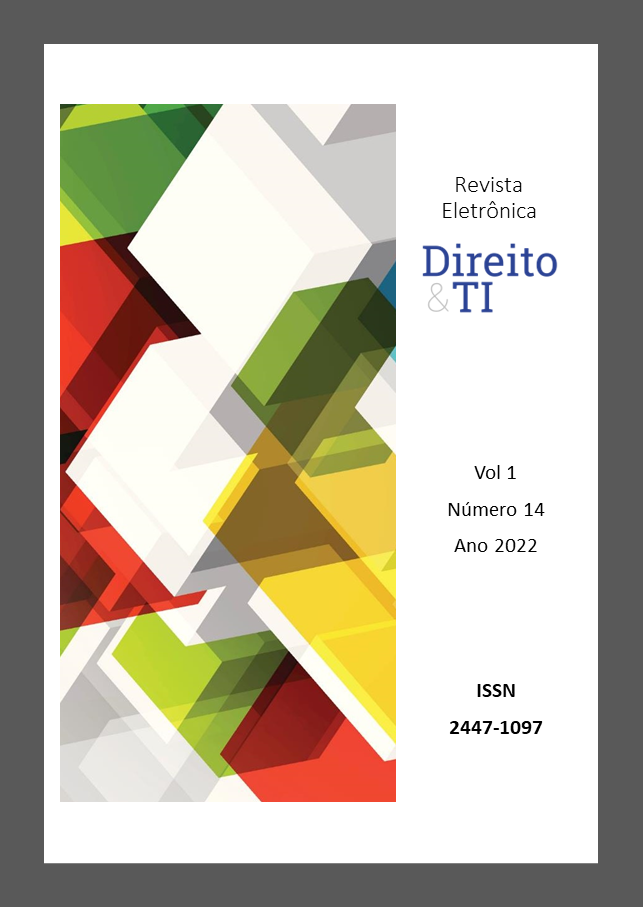Prediction of cybercrime fine penalties in Brazil:
a contribution of explainable machine learning and artificial intelligence
DOI:
https://doi.org/10.63451/ti.v1i14.118Keywords:
Machine learning, Cybercrimes, CBA, Explainable artificial intelligence, XGBoostAbstract
This article presents the use of 'explainable artificial intelligence' in the context of forecasting fines for cybercrimes and to achieve this objective, first a forecast of fines imposed by Brazilian courts regarding cybercrimes is conducted using data collected from res judicata and machine learning, and then the explanation of which factors, among those present in the model, that most influence the prediction results is made. This prediction will be made according to the phases of the database knowledge discovery methodology (KDD) and with the use of two supervised machine learning algorithms. The results tend to help specialists to discover the factors that may influence the patterns of application of fines by the courts and, based on these patterns, to make analyzes and predictions.
Downloads
References
CASTRO, Ursula Rosa Monteiro de. Explorando aprendizagem supervisionada em dados heterogêneos para predição de crimes. Dissertação (Mestrado em Informática). Pontifícia Universidade Católica de Minas Gerais (PUC-MG), Minas Gerais, 2020.
AGRAWAL, Rakesh; SRIKANT, Ramakrishnan. Fast algorithms for mining association rules. Proc. of 20th Intl. Conf. on VLDB, 1994.
AL-MAOLEGI, M.; ARKOK, B. Na, improved apriori algorith for association rules. International Journal on Natural Language Computing (IJNLC), Computer Science, Jordan University of Science and Technology, Irbid, Jordan, 2014.
CNJ. Justiça 4.0: Inteligência Artificial está presente na maioria dos tribunais brasileiros. Disponível em: https://www.cnj.jus.br/justica-4-0-inteligencia-artificial-esta-presente-na-maioria-dos-tribunais-brasileiros/. Acesso em: 22 dez. 2022.
GREENSTEIN, S. Preserving the rule of law in the era of artificial intelligence (AI). Artif Intell Law 30, 291–323 (2022). Disponível em: https://doi.org/10.1007/s10506-021-09294-4. Acesso em: 26 set. 2022.
INSTITUTO DE SEGURANÇA PÚBLICA. Dados abertos. Governo do Estado do Rio de Janeiro. Disponível em: http://www.ispdados.rj.gov.br/. Acesso em: 26 set. 2022.
ISSN 0031-3203, https://doi.org/10.1016/j.patcog.2022.108604.
KHOUALED et al. "Corona Pandemic (Covid-19) and Information and Communication Technology (ICT): Who Affects Whom?". Revista Geintec – Gestão, Inovação e Tecnologia. Vol. 12, n. 1, ISSN 2237-0722. P. 132-147. Disponível em: https://revistageintec.net/wp-content/uploads/2022/12/02_9066_Revista-geintec-gestao-inovacao-e-tecnologias.pdf. Acesso em: 26 set. 2022.
KSHATRI, S. Sappa; et al. An empirical analysis of machine learning algorithms for crime prediction using stacked generalization: An ensemble approach. IEEE Access v. 9, p. 67488-67500, 2021.
MORGAN, Steve. Cybercrime To Cost The World 8 Trillion Annually In 2023. Disponível em: https://cybersecurityventures.com/cybercrime-to-cost-the-world-8-trillion-annually-in-2023/. Acesso em: 23 dez. 2022.
NIVETTE, A.E., Zahnow, R., Aguilar, R. et al. A global analysis of the impact of COVID-19 stay-at-home restrictions on crime. Nat Hum Behav 5, 868–877 (2021). Disponível em: https://www.nature.com/articles/s41562-021-01139-z. Acesso em: 26 set. 2022.
OLIVEIRA, Ingrid. Levantamento mostra que ataques cibernéticos no Brasil cresceram 94%. CNN Brasil. 19 ago. 2022. Disponível em: https://www.cnnbrasil.com.br/tecnologia/levantamento-mostra-que-ataques-ciberneticos-no-brasil-cresceram-94/. Acesso em: 26 set. 2022.
RAYHAN, Y.; HASHEM, T. AIST: An interpretable attention-based deep learning model for crime prediction. https://doi.org/10.48550/arXiv.2012.08713. Revisado em 21 nov. 2021. Disponível em: https://arxiv.org/abs/2012.08713. Acesso em: 26 set. 2022.
RUDIN, C. Stop explaining black box machine learning models for high stakes decisions and use interpretable models instead. Nat Mach Intell 1, 206–215 (2019). Disponível em: https://doi.org/10.1038/s42256-019-0048-x. Acesso em: 26 set. 2022.
SAFAT, W.; ASHGHAR, Wajiha; GILLANI, S. Andleeb. Empirical analysis for crime prediction and forecasting using machine learning and deep learning techniques. IEEE Access, v. 9, p. 70080–70094. 202.1Disponível em: www.doi:10.1109/ACCESS.2021.3078117. Acesso em: 26 set. 2022.
SATYA, M. Muddamsetty, et al. Visual explanation of black-box model: Similarity Difference and Uniqueness (SIDU) method,Pattern Recognition,Volume 127,2022, 108604,
SECRETARIA DE SEGURANÇA PÚBLICA. Governo do Estado de São Paulo. Disponível em: https://www.ssp.sp.gov.br/. Acesso em: 26 set. 2022.
SECURITY REPORT. Disponível em: https://www.securityreport.com.br/overview/brasil-sofreu-mais-de-885-bilhoes-de-tentativas-de-ataques-ciberneticos-em-2021/#.Y9viYXbMK3A. Acesso em: 28 set. 2022.
SEJUSP. Secretaria de Estado de Justiça e Segurança Pública. Disponível em: http://www.seguranca.mg.gov.br/. Acesso em: 26 set. 2022.
SOUZA, José Renato Mendes de. Utilização de aprendizagem de máquina na predição de crime. Trabalho de conclusão de curso (Tecnólogo em Tecnologia em Sistemas de Computação), Universidade Federal Fluminense (UFF), Rio de Janeiro, 2018.
STEC, A.; KLABJAN, D. Forecasting crime with deep learning. 2018. Disponível em: https://arxiv.org/abs/1806.01486. Acesso em: 13 set. 2022.
WANG, Bao et al. Deep learning for real-time crime forecasting and its ternarization. Chinese Annals of Mathematics, Series B, v. 40, n. 6, p. 949-966, 2017.






